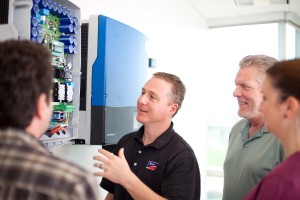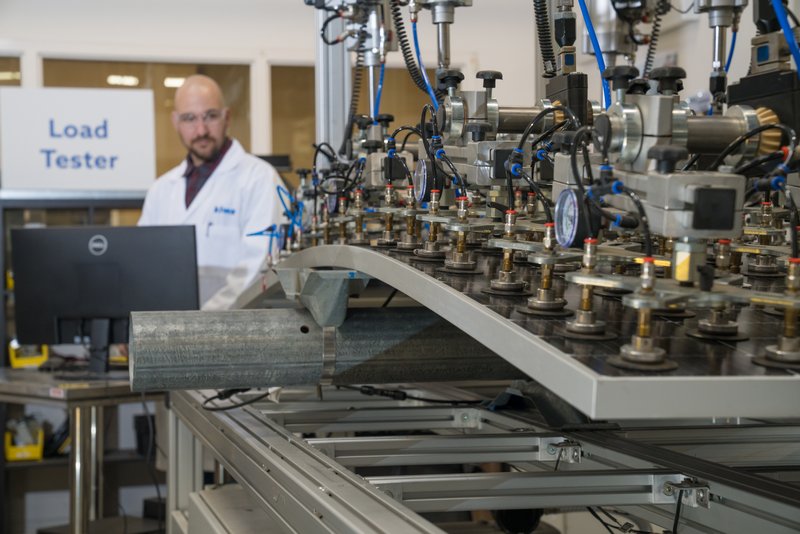Choose 1,000 Volts for Commercial PV Applications
By Jim Morgenson, Director of Commercial Market Development at SMA America
With the evolution of UL-listed PV components, solar industry professionals now have the option of installing solar arrays in a 600-Vdc or 1,000-Vdc design for commercial applications. While history would indicate a maximum system voltage of 600 for all systems sizes, the 1,000-Vdc approach is quickly becoming the standard for commercial applications.
 PV systems with a maximum of 600 Vdc are applicable for one- or two-family dwellings, as dictated by the National Electrical Code (NEC), or where the maximum rated voltage of any one system component is 600 V. For example, if the maximum rated voltage of the PV modules is 600 V, but all of the other components are rated at 1,000 V, then the maximum system voltage would be 600.
PV systems with a maximum of 600 Vdc are applicable for one- or two-family dwellings, as dictated by the National Electrical Code (NEC), or where the maximum rated voltage of any one system component is 600 V. For example, if the maximum rated voltage of the PV modules is 600 V, but all of the other components are rated at 1,000 V, then the maximum system voltage would be 600.
On the other hand, 1,000-Vdc systems can be deployed for small, medium and large commercial, industrial, agricultural and utility projects, where all components in the system are UL-listed for DC voltages of 1,000. The barriers to domestic adoption of 1,000-Vdc commercial PV systems have ranged from a lack of UL-listed products, legacy designs at 600 Vdc and reluctant inspector acceptance.
However, the tide has changed recently and these barriers have been removed by a growing number of high-quality 1,000-Vdc UL-listed modules, BOS components and central and three-phase string inverters, along with a greater awareness among inspectors that provisions exist in the current code to support 1,000 Vdc for commercial applications.
According to GTM Research, the U.S. commercial PV market is expected to see 25 percent annual compound growth from 2011 to 2016, clearly indicating the market’s potential. The benefits of utilizing 1,000-Vdc input design for commercial PV applications are also clear: increased energy production by operating at higher voltages and material cost and labor savings due to longer strings, cumulatively resulting in lower levelized cost of energy (LCOE). It’s a win–win with higher performance over the life of the system and lower total installed costs.
With approximately 40 percent BOS wiring savings and up to 2 percent performance improvement, the economic value of a 1,000-Vdc PV design can top $100,000 per megawatt ($0.10/watt). This is exactly why leading companies are quickly moving toward a 1,000-Vdc design standard, driving value up and costs down in the accelerating North American commercial segment.





As we work in the Caribbean, we have to design for both US and European electrical systems. Consequently we are installing both 1000V and 600V systems. If you have never worked 1000V, you are missing something. On a 600V install we will typically use strings of 12 modules. For our 1000V systems, we use 24 to 26 modules depending on the roof layout. That reduces the cabling a tremendous amount. Also, the European SMA inverters have multiple string inputs, so in many cases we install 2 x 20KW inverters with no combiners, we go straight to the inverter, which allows for string fault detection and individual string testing at the inverter. As we always test every string with a Seaward Solar PV150 test kit, we can perform the tests at the inverter.